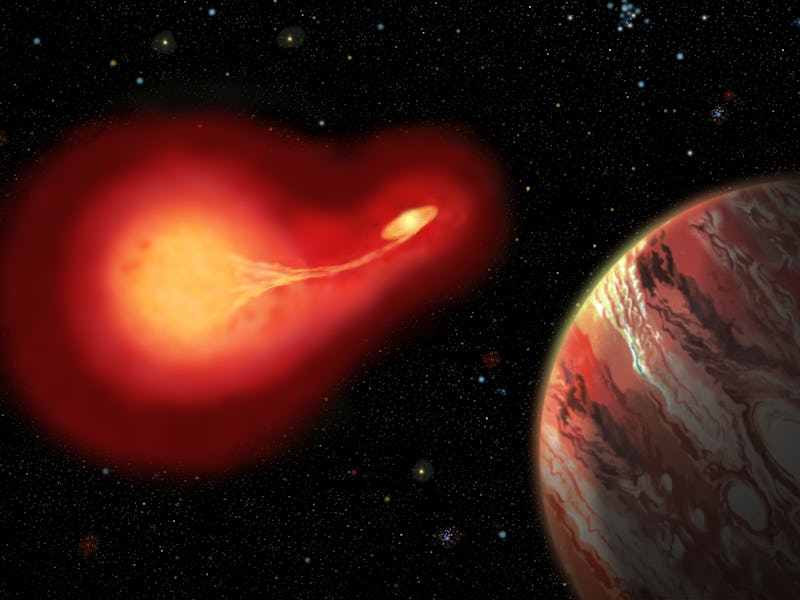Binary star systems — two stars orbiting around one another and sharing a center of gravity — aren’t just a figment of science fiction popularized by works like Star Wars. They are real and quite common, and sometimes they even possess actual planets in their orbit. Scientists from NASA and York University in Toronto have now learned how these “Tatooine worlds” maintain stability and avoid annihilation via two suns, according to new research published Wednesday in The Astrophysical Journal.
“This is very different from what will happen in our own solar system a few billion years from now, when our sun starts to evolve and expand to such a tremendous size that it will engulf the inner planets, like Mercury and Venus and possibly Earth too, faster than they can migrate out to larger orbits” Veselin Kostov stated at the NASA Goddard Space Flight Center in a news release. “It seems that if we had a second star in the center of our solar system, things might go differently.”
Like our own sun, stars in the universe often expel a lot of intense material out into space. Two stars that are orbiting one another are often close enough to begin exchanging just violent stellar substances, especially when they are of different evolutionary states. One star may be living life in stable middle age, while the other is rapidly expanding and ballooning. As more and more material is ejecting, the binary star system could hemorrhage a bunch of mass, or even experience a supernova explosion that consumes any planets orbiting in the vicinity.
Turns out, however, many planets are able to survive these violent senior years of their host stars. How? They simply do what all children do — they move away from their parents’ neighborhood.
Using simulations of nine recently discovered exoplanets which orbit binary stars, the research team found that planets could avoid catastrophe by migrating to farther orbits — sometimes as large as orbital distances that double Pluto’s. Perhaps most intriguing is that the simulations suggest multi-planet binary systems could experience outright ejection of planets from the star system or see planets swap orbits with one another.
This is perhaps most exciting in regards to better understanding Alpha Centauri — the closest star system to Earth (just 4.3 light-years away) and binary star system itself. There is an intense amount of interest these days to see if Alpha Centauri possesses a habitable planet and possibly extraterrestrials. Understanding the movements of planets orbiting binary stars could be useful in helping future researchers better target what regions of Alpha Centauri would most likely contain a planet in a stable orbit.
